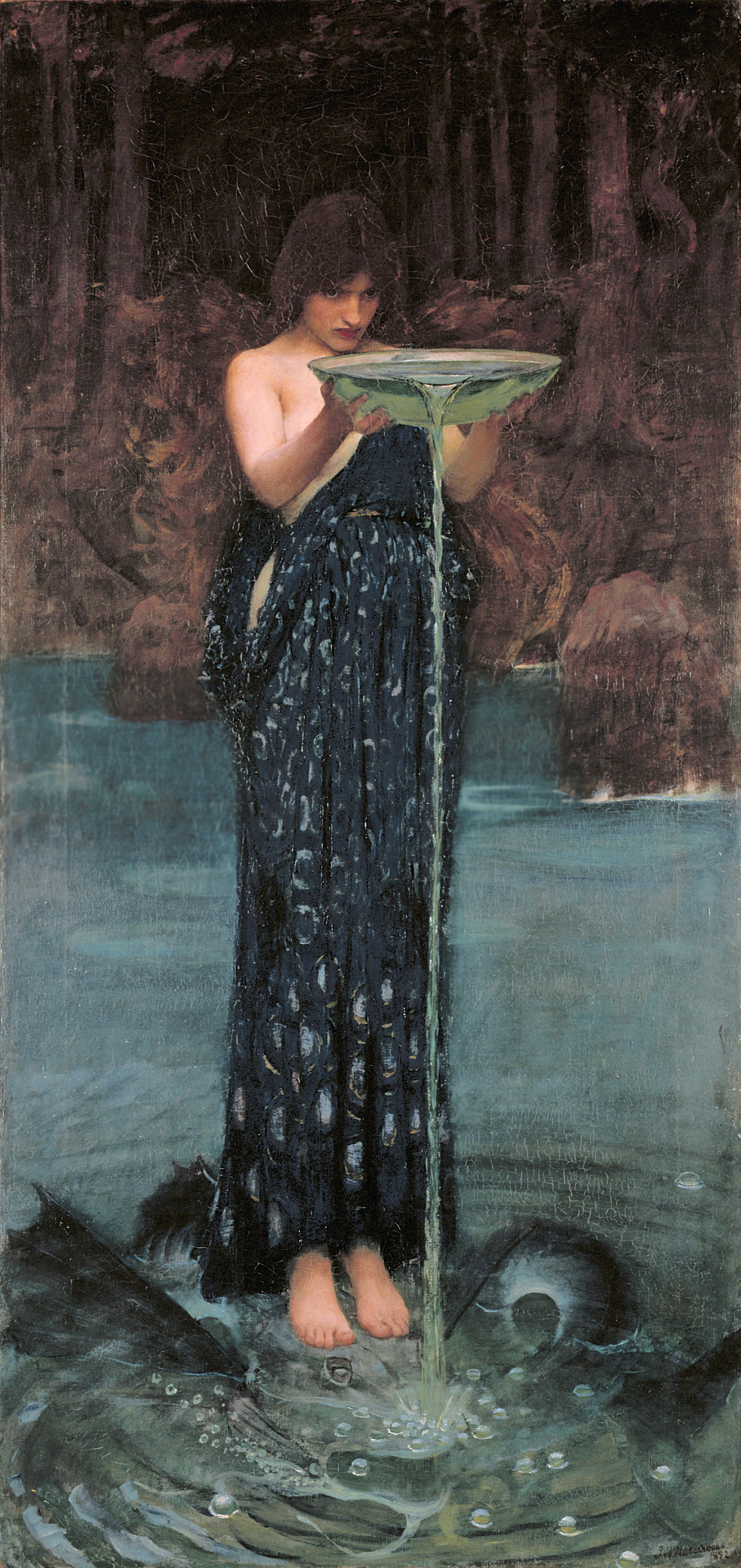Circe Invidiosa, completed in 1892, is John William Waterhouse’s English artist known primarily for his depictions of women set in scenes from myth, legend or poetry. He is the best known of that group of artists who from the 1880s revived the literary themes favoured by the Pre-Raphaelites. second depiction of the Greek mythological character Circe, following on from his Circe Offering the Cup to Ulysses
English artist known primarily for his depictions of women set in scenes from myth, legend or poetry. He is the best known of that group of artists who from the 1880s revived the literary themes favoured by the Pre-Raphaelites. second depiction of the Greek mythological character Circe, following on from his Circe Offering the Cup to Ulysses Oil painting in the Pre-Raphaelite style by John William Waterhouse, created in 1891. exhibited the previous year. She is shown in the act of poisoning the pool that was home to the naiad
Oil painting in the Pre-Raphaelite style by John William Waterhouse, created in 1891. exhibited the previous year. She is shown in the act of poisoning the pool that was home to the naiadType of primitive spiritual entity from the pagan past, perhaps the manifestation of a race memory, usually associated with a single place. Scylla, thus transforming her into a hideous monster; the two were love rivals for the affection of Glaucus, a Greek sea god. In contrast to the inviting figure in his earlier painting, Waterhouse shows an altogether different side of the sorceress, “drawn into herself, gathered around the core of her malicious power”.[1]
The art critic Anthony Hobson describes the painting as being “invested with an aura of menace, which has much to do with the powerful colour scheme of deep greens and blues [Waterhouse] employed so well”.[2] Fellow critic Judith Yarnall echoes the sentiment about the striking use of colour, and remarks on the painting’s “integrity of line”.[1]
Waterhouse returned to Circe as the central figure in two compositions Circe is the title given to two oil on canvas sketches by the English artist John William Waterhouse; he worked on both during the final years of his career from 1911 to 1914. undertaken during the period 1911–1914, both depicting her seated beside a marble table surrounded by her magical accoutrements.[3] One painting bears the inscription Circe on the back; occasionally an alternative title of The Sorceress is given.[4]
Circe is the title given to two oil on canvas sketches by the English artist John William Waterhouse; he worked on both during the final years of his career from 1911 to 1914. undertaken during the period 1911–1914, both depicting her seated beside a marble table surrounded by her magical accoutrements.[3] One painting bears the inscription Circe on the back; occasionally an alternative title of The Sorceress is given.[4]

